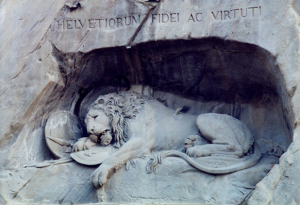News
Latest Lion Aid News
The actions of trophy hunters speak louder than words
Tuesday 27th September 2011
|
Recently, we have received further evidence of a lack of any restraint by trophy hunters and hunting operators in terms of their single minded quest to shoot lions. The Bumi Hills Wildlife Area in Zimbabwe used to have a single male lion, a rather well-known animal to his misfortune. Bumi Hills joins on to a hunting concession, and the hunters wasted little time to place baits by the Reserve boundary to lure the male out and get shot. Bumi Hills asked some very relevant questions:
This incident comes hot on the heels of reports of radiocollared desert lions being shot in Namibia by trophy hunters. Andy Loveridge observed the same depredations to his study lions in Hwange National Park in Zimbabwe. Between 1999 and 2004, a total of 38 lions within the Park were tagged either with radiocollars or with ear tags, and 24 of those were shot by trophy hunters – baits were used to lure lions out of the protected area and into the hunting concessions. That offtake of 24 lions represented 72% of the adult territorial males tagged within the Park and 60% of the tagged subadult males. Two consequences became immediately apparent: the proportion of adult males/females declined from 1:3 to 1:6, and the rapid turnover of males resulted in increased infanticide. In terms of male turnover, two lion prides saw a change of males four times during the five years of the study as previous male coalitions were successively removed by hunters. A total of 19 cubs were lost most likely due to infanticide (directly observed on five occasions) from four prides. And at times, males removed from a pride were not replaced for considerable periods of time – in one instance no “replacement” males appeared for 16 months. Why are lions part of research programmes and those in reserves and protected areas so heavily targeted by hunters? I think Craig Packer gave us the answer a year or so ago, when he concluded that the reason why hunters so often come up empty handed in concessions is over 90% due to overhunting in the past. There are simply no more large male lions left to hunt. And that is why the hunters take animals from areas where they are officially protected. This has been going on for some time, and the examples above are just part of a long list of transgressions. I believe there are some things that can be done about this in the interim before the much needed ban on trophy hunting imports is enacted. First, allowing hunters to bait a lion should immediately cease. It is not hunting in any sense of the word to begin with, and goes against all principles of “fair chase” that is “embedded” in the constitution of SCI and at least the Professional Hunting Association of South Africa. Second, as Botswana belatedly realized and is now enforcing, hunting concessions should not immediately join onto conservation areas. There should be a wide buffer zone between them. Third, Bumi Hills and the Desert Lion Conservation programme should immediately raise the issue with the professional hunting organizations in their countries and the relevant Ministries. Awareness of hunter transgressions is needed to be raised internationally and equally important nationally. Fourth, it took one man, Mohamed Bouazizi, to begin the Arab Spring. Perhaps the Bumi lion, Mandebvu, will now ignite a similar uprising against further sport hunting as “conservation”. Picture: http://bit.ly/nR8G6G Tags: lions, trophy hunting, Zimbabwe, Categories: Trophy Hunting |
Posted by Pieter Kat at 16:00
No comments have been posted yet.
Add a new comment
Existing user
New user sign up




